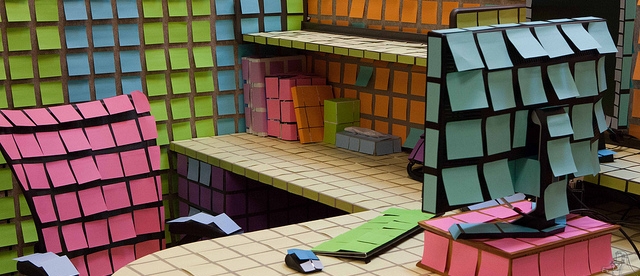Quick Tip Wednesday: How to Set Up a Gratitude Month
Welcome back to Quick Tip Wednesday!
3 min read
Sarah Schnurr : Jul 7, 2017 12:53:59 PM

Welcome back Chrome Warriors! We hope you had a fantastic Fourth of July weekend. Last week, we began our Building a PD Plan series with information on how to identify and structure your goals, whether they're short-term, or part of a strategic plan. This week we'll move on to step two: researching tools and resources that can help you accomplish these goals.
For this part of the planning process, try to keep an open mind about how you can best deliver content to your teachers. Imagine that the sky is the limit, and that budget isn't a factor. By painting a picture of a "perfect world" scenario, you can suss out what's most important and then pare your plan down to the essentials.
The good ole "sit-n-get"! There's nothing like driving to a dingy meeting room and being bombarded with irrelevant facts for hours on end, just to satisfy your PD requirements.
...But wait! Nowadays, there are so many engaging conferences and workshops for teachers. From hands-on learning to tech fairs, off-site opportunities are a great way to change your frame of mind simply by changing your scenery.
Technology is a prime focus among many educators and administrators. Schools want to offer tech opportunities for their students, and use state-of-the-art equipment in the classroom. But with hundreds of articles like "If You Want Tech in the Classrooms, Teach the Teachers" and "Training Teachers Who Are Terrorized by Technology," it's obvious there's a gap between what districts want to do, and what they're currently able to (effectively) do. Improving teacher tech training can be a PD goal unto itself -- but you can also use technology to deliver content related to other PD goals. Simply introducing G Suite for Education or hosting a quarterly mini-tech summit could open up a world of possibilities for teachers.
Blended learning platforms take tech teaching to another level, using technology to deliver information while giving teachers hands-on technology experience. For example, some of our partner districts set up sorties to teach how to use social media tools, while using the platform's technology to gather and respond to teacher learning. Technology-based tools are more flexible compared to in-person training opportunities, as they give teachers the opportunity to revisit and further explore content on their own time.
Professional learning communities (PLCs) are different than peer mentorship programs. The purpose is not necessarily to help one teacher (or group of teachers), but to help the school as a whole. Teachers are encouraged to gather evidence of learning, create new strategies to address challenges, implement them, then analyze and share. PLCs can take the form of face-to-face meetings, or online chats (using Voxer or Twitter), and will typically involve dialogue and sharing of resources. Some of your teachers may have already established a PLC of their own, communicating with teachers across the country on topics that they are passionate about.
Consider organizing PLCs by grade level or subject area, or around a common interest (technology, project-based learning, interdisciplinary teaching). While it will take some time to work out logistics, PLCs tend to take on a life of their own after initial conversations. PLCs give teachers agency over their professional development.
Mentoring programs are typically associated with first-year teachers, but they can be useful for educators at any level. Every teacher has something unique they bring to the table, whether they have years of experience in their specific subject area, or are fresh out of school and familiar with the most current pedagogical practices.
At Lausanne Collegiate School, educators participated in the TechMentor program, in which tech-savvy teachers provided one-on-one coaching to less tech-savvy teachers. In their case study on the program, Education World recognized that "mentors [...] are an effective and valuable component in all K-12 staff development -- not just in the area of technology integration. The TechMentor model, which identifies those who are competent with a skill, highlights their successes, and provides supportive and collaborative assistance for the rest of the faculty, can work whether the initiative is whole language, multiple intelligences, core essentials, or teaching to standardized tests."
Reframing mentoring programs as an opportunity for anyone to be either a mentor or a mentee creates a positive, collaborative environment, that maintains a respect for each teacher's individual strengths and challenges.
How do you currently deliver professional development in your district? What would you like to try next year?
Image attribution
Site: flickr.com [Image 1]
.png)
Welcome back to Quick Tip Wednesday!

Mid-Year Reflection: Your Secret to a Stronger Second Semester
A great way to get your learners engaged in your Alludo program is by keeping the content in your program up-to-date and relevant. Rebecca has...